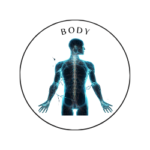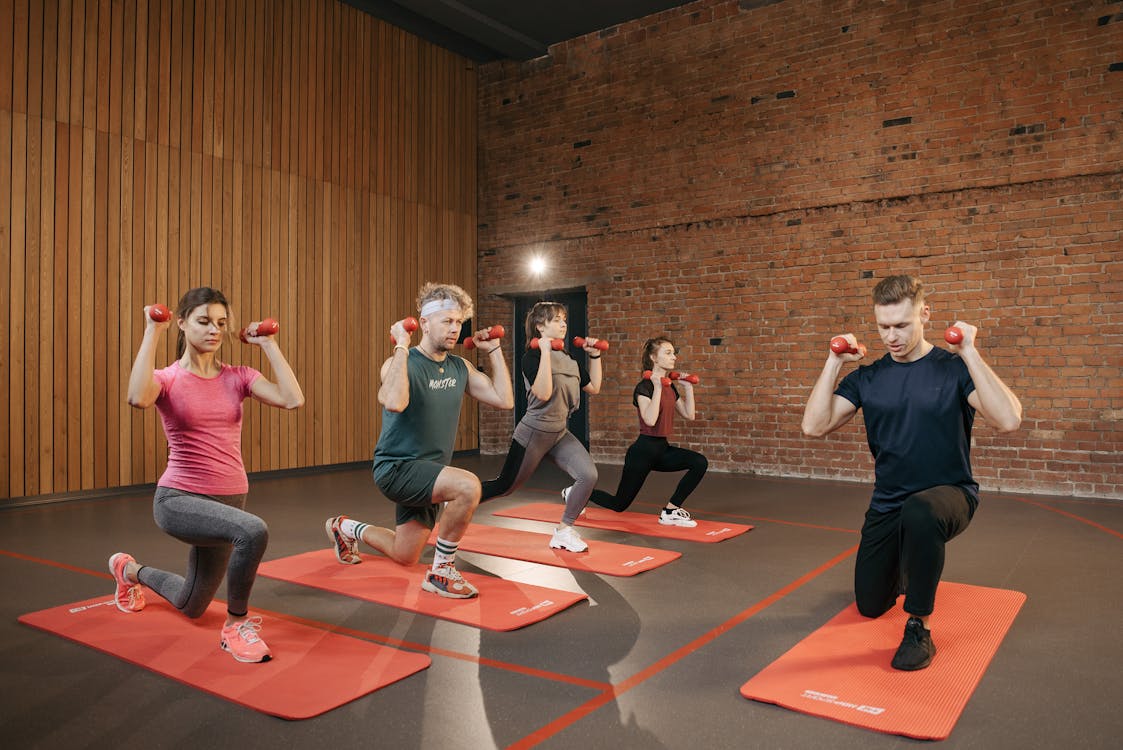 Mind
Mind
- Digital and Modern Well-being
- Mental Health and Emotional Well-being
- Mind-Body Connection and Holistic Health
- Parenting and Family
- Personal Growth and Development
- Relationships and Social Well-being
- Stress and Relaxation
- Therapeutic and Creative Practices
- Trauma and Recovery
- Work, Productivity, and Discipline
 Body
Body
 Fitness
Fitness
 Food
Food
 Beauty
Beauty
What is Functional Fitness

A Beginner’s Guide to Functional Fitness: Move Better, Feel Stronger
Ever struggled to lift a heavy grocery bag, climb stairs without getting winded, or get up from the floor easily? These everyday movements might not seem like exercise, but they require strength, mobility, and coordination. That’s where functional fitness comes in.
Unlike traditional workouts that focus on isolated muscles (think bicep curls or leg presses), functional fitness trains your body to perform real-life movements more efficiently and safely. Whether you’re a complete beginner or looking to build practical strength, this guide will show you how to improve your fitness for daily life—while also helping with weight loss, injury prevention, and overall well-being.
Why Functional Fitness Matters
Most people associate “fitness” with lifting heavy weights or running long distances. But being functionally fit means having the strength, flexibility, and endurance to move with ease—in everyday life.
Why does this matter?
✔ Reduces the risk of injuries in daily activities
✔ Improves mobility and flexibility
✔ Enhances balance and coordination
✔ Builds strength in multiple muscle groups simultaneously
✔ Helps with weight loss by engaging multiple muscles at once
Functional fitness isn’t just for athletes—it’s for everyone. Whether you’re a busy parent, an office worker, or someone recovering from an injury, training for real-life movements can make you stronger, more mobile, and more energetic.
How to Get Started with Functional Fitness
1. Master the 7 Fundamental Movements
Functional exercises focus on natural movement patterns. Before adding weights or intensity, it’s important to build a solid foundation with these seven key movement patterns:
✔ Squat (Lower Body Strength & Mobility)
🔹 Example Exercise: Bodyweight squat, goblet squat, or box squat
🔹 Real-life application: Sitting down and standing up
✔ Hinge (Posterior Chain Strength)
🔹 Example Exercise: Hip hinge, deadlifts, or kettlebell swings
🔹 Real-life application: Picking up objects from the ground
✔ Lunge (Single-Leg Stability & Coordination)
🔹 Example Exercise: Forward lunge, reverse lunge, or step-ups
🔹 Real-life application: Walking up stairs or stepping over objects
✔ Push (Upper Body Strength)
🔹 Example Exercise: Push-ups, overhead press, or bench press
🔹 Real-life application: Pushing doors open or lifting overhead
✔ Pull (Back & Grip Strength)
🔹 Example Exercise: Rows, pull-ups, or resistance band pulls
🔹 Real-life application: Pulling heavy objects or opening heavy doors
✔ Twist (Core & Rotational Strength)
🔹 Example Exercise: Russian twists, woodchoppers, or medicine ball throws
🔹 Real-life application: Reaching to grab something behind you
✔ Carry (Full-Body Stability & Grip Strength)
🔹 Example Exercise: Farmer’s carry, suitcase carry, or bear hug carry
🔹 Real-life application: Carrying groceries, luggage, or heavy bags
💡 Beginner Tip: Start by practicing these movements with just your body weight before adding resistance.
2. Try a Beginner Functional Fitness Workout
Here’s a simple, beginner-friendly routine that incorporates all seven movement patterns. Perform each exercise for 40 seconds, rest for 20 seconds, and repeat for 2–3 rounds.
| Exercise | Movement Pattern |
|---|---|
| Bodyweight Squat | Squat |
| Hip Hinge (Glute Bridge) | Hinge |
| Step-ups | Lunge |
| Incline Push-ups | Push |
| Bent-over Rows (Resistance Band) | Pull |
| Russian Twists | Twist |
| Farmer’s Carry (Dumbbells) | Carry |
💡 Pro Tip: Perform this routine 3 times per week, and gradually increase the difficulty by adding resistance bands, dumbbells, or kettlebells.
3. Focus on Core Strength & Stability
Your core is the foundation of functional movement—it stabilises your body in nearly every action, from bending over to lifting something overhead.
Best Core Exercises for Functional Strength:
✔ Plank – Builds overall core endurance
✔ Dead bug – Enhances core control and stability
✔ Hanging knee raises – Strengthens lower abs and hip flexors
✔ Side plank with rotation – Improves oblique strength and balance
💡 Beginner Tip: Start with 3 sets of 20-30 seconds per exercise and increase over time.
4. Improve Mobility & Flexibility
Stiff joints and tight muscles limit movement and increase injury risk. Adding mobility drills to your routine can enhance flexibility and range of motion, making functional movements smoother and more efficient.
Best Mobility Drills:
✔ 90/90 hip stretch – Improves hip flexibility
✔ Thoracic spine rotations – Enhances upper body mobility
✔ Ankle dorsiflexion drills – Boosts squat depth and stability
✔ Dynamic lunges with reach – Engages the entire body
💡 Pro Tip: Spend 5–10 minutes before workouts performing dynamic mobility drills.
5. Train for Real-Life Scenarios
One of the best things about functional fitness? It directly translates into daily activities.
🛒 Carrying heavy groceries? Train with farmer’s carries.
📦 Lifting boxes? Perfect your deadlifts and squats.
🚶 Climbing stairs? Strengthen your lunges and step-ups.
🚴 Want better endurance? Add cardio-based functional movements like sled pushes or battle ropes.
💡 Try This: Choose 1-2 movements that mimic your daily activities and include them in your routine.
Common Mistakes to Avoid
🚫 Ignoring mobility work – Stiff muscles = less effective movement.
🚫 Skipping core training – Weak core = poor balance and posture.
🚫 Lifting too heavy too soon – Master bodyweight movements first.
🚫 Neglecting single-leg exercises – Improves balance and prevents injury.
Final Thoughts: Why Functional Fitness is a Game-Changer
Whether you’re an absolute beginner or someone looking to move better in daily life, functional fitness is one of the most effective training approaches. It helps with weight loss, builds practical strength, prevents injuries, and improves overall well-being—all in a way that actually matters outside the gym.
So, why not give it a try? Start small, focus on movement quality, and gradually build strength and endurance. Soon, you’ll notice yourself moving more effortlessly and feeling stronger in everyday life.
